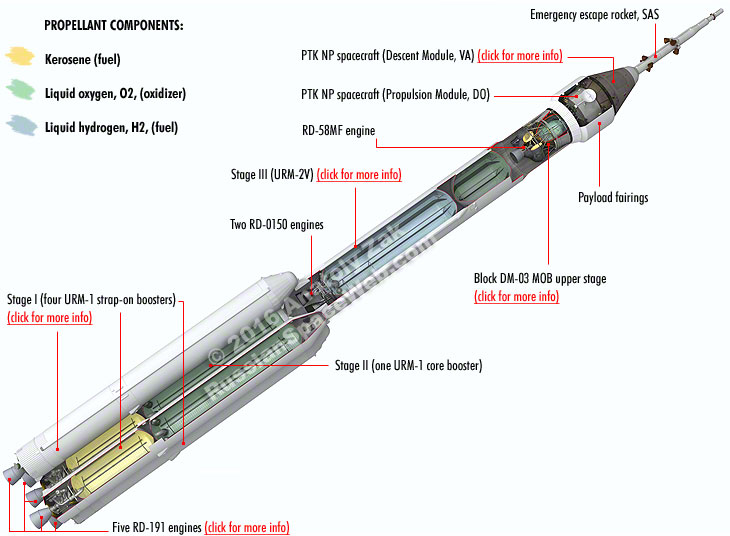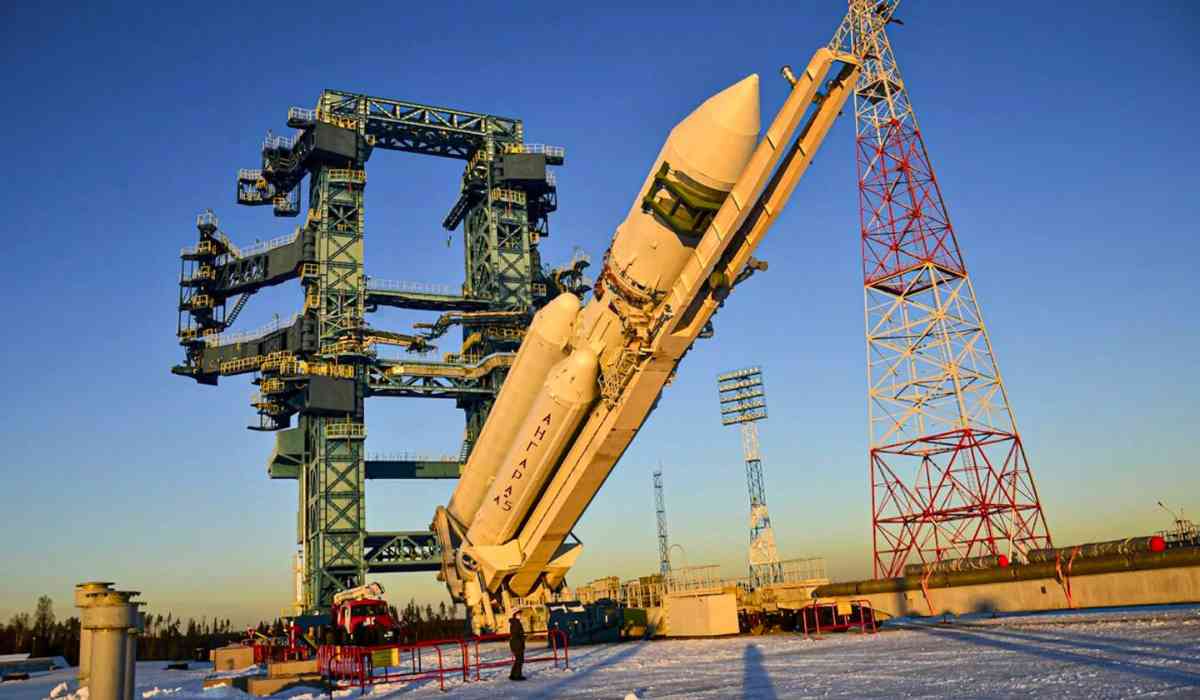The Russian space program—a source of tremendous national pride—continues its drive for space exploration with the ambitious Angara A5 rocket. The Khrunichev State Research and Production Space Centre is working on the Angara A5, a spacecraft designed to replace the defunct Proton-M as a dependable workhorse for orbiting large payloads.
_1712677429.png)
The Angara A5: A Modular Powerhouse
Design and Flexibility: The Angara A5 is a heavy-lift launch vehicle that can reach low Earth orbit (LEO) with a massive 24.5 metric tonnes of cargo. This colossus is a member of the Angara family and provides a variety of rockets for various purposes. Its flexible top stages, which meet different cargo requirements, are where its modular architecture really shines.
Powerful Propulsion System: The first stage boasts five RD-191 engines fueled by a cleaner-burning combination of liquid oxygen (LOX) and kerosene. The second stage utilises a single RD-0124A engine with the same propellant mix. Finally, the third stage offers a choice: the reliable Briz-M upper stage or the more advanced Orion space tug for precise payload deployment.
Launchpad Options: The primary launch site for the Angara A5 is the Vostochny Cosmodrome in Russia's Far East. Previously, the Plesetsk Cosmodrome in the north served as the launchpad for early Angara A5 missions.

Challenges on the Launchpad
Development Delays: The Angara A5 project has encountered a number of obstacles due to both financial and technological constraints. It was developed in the late 1990s, but 2014 saw the first test launch of the system. The ongoing difficulties are demonstrated by the fact that the most recent attempt to launch from Vostochny was aborted on April 9, 2024, shortly before liftoff.
Space Independence: President Putin views the Angara as a key to securing Russia's space independence. With the dissolution of the Soviet Union, concerns arose about reliance on Ukrainian components. The Angara A5 serves as a domestically developed alternative.
Ecological Considerations: Unlike the polluting propellants powering the Proton-M, the Angara A5 utilises a more environmentally friendly fuel blend. This translates to a smaller ecological footprint in launch and drop zones, making it a more sustainable option.
_1712677579.png)
A Look Towards the Future
Commercial Potential: The Angara A5 hopes to establish itself as a leader in the worldwide market for commercial launches. Reliability and cost-effectiveness in relation to rivals are key success criteria.
Deep Space Exploration: Russia's upcoming space projects may depend heavily on the Angara A5, which may be used on trips to the Moon and beyond.
Conclusion
The Angara A5 embodies both the ambitions and challenges faced by Russia's space industry. This powerful rocket continues its journey, symbolising unwavering determination in the face of hurdles. Its success will be a testament to Russian engineering prowess and a defining moment in the nation's spacefaring future.
ⒸCopyright 2024. All Rights Reserved Powered by Vygr Media.
























